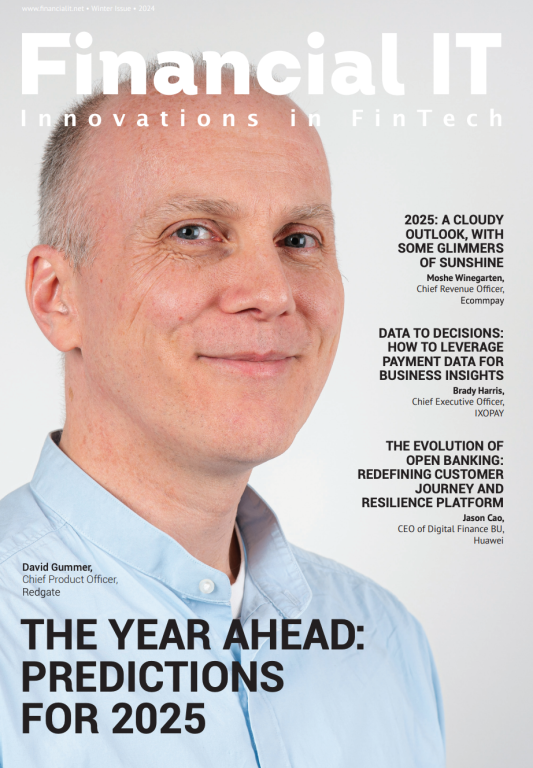2017 – the Year of the Internet of ‘SOME’ Things

- Nassar Hussain, Managing Director at SOTI Europe
- 13.03.2017 07:15 am internet
2016 has seen IoT continue its meteoric rise through the technology and business space. A never ending array of connected devices has joined networks around the world, bringing the total of global ‘things’ to a staggering 23 billion. From connected cars, thermostats to lawnmowers, we have continued to see technology evolve and work its way into more business and consumer applications, performing tasks, anticipating our needs and making our lives easier.
IoT is having a profound affect on lives, becoming an integral part of our normal day and changing the way we interact with devices and each other. We are now in a position where as we wake up in the morning and check our smartphone, we can command our coffee machine to start brewing. It has been an incredibly exciting year for IoT.
However, the industry hasn’t gone without its hiccups. High profile cyber attacks and the first which fell at the feet of IoT was the October Dyn DDos attacks which saw a significant number of high profile websites crash, leaving many living in the US and Europe without their favourite sites. The hacks were carried out by overloading specific targets with traffic until they collapsed under the strain.
What made these attacks so extraordinary is that it was carried out using IoT devices. Dyn estimated the hack involved up to 100,000 malicious endpoints. The attack, probably the biggest of its kind to date, bought down websites including; Netflix, Twitter, CNN and The Guardian. The real concern to businesses and consumers alike is that there is currently no Government regulation in place for these IoT devices. Standards are not yet defined, and technology is changing too fast. Manufacturers building IoT devices or smart “things” are in different jurisdictions around the world, and their products are entering marketplaces too quickly for government regulations to work.
A lesson which must be learnt from attacks like Dyn is while the development and roll out of these devices is revolutionary; they must be secured and regulated properly. Moving into 2017, the ‘Internet of Things’ which seems to slowly be becoming the ‘Internet of Everything’, needs to take a step back and evaluate how to protect itself in the future. Over the past five years the number of global connected devices has more than doubled, from 8.7 billion to 23 billion, bringing with it new vulnerabilities. Cyber security has been at the forefront of technology issues for many years, and with an almost uncontrollable number of devices becoming connected, this new cyber threat will continue to grow. This is why SOTI is calling for the industry to take stock in 2017 and become the ‘Internet of Some Things’.
There is no doubt IoT is having a huge impact on our lives, but it’s the difference in the enterprise which has seen the greatest results. Businesses that have embraced IoT and integrated a well thought out strategy have reaped the rewards, with new levels of mobility and efficiency gains nurturing tremendous business growth. IoT, when utilised in the right way, offers untapped potential. Connected endpoints within a business ecosystem acts as a portal with the ability to continuously collect valuable data. However, simply having the information isn’t useful; it’s the ability to apply the information to enhance the business which is a game-changer. As more connected devices appear, with it comes more information. In fact, 90 per cent of all digital information has been created over the past two years, and this is set to continue.
With data piling up and a myriad of devices becoming connected the amount of information available is starting to become unmanageable, rendering large amounts of it almost useless. With this is mind businesses need to ask themselves is all of this data of use? How will it help us differentiate from the competition, improve customer experience or help us become an industry disruptor? Once relevant data is identified it is then critical that data is analysed and used in the most effective way, to help bring about positive change.
Attempting to connect all devices and utilise the data collected from them will cause confusion, there is simply too much information for businesses to use effectively. It is important businesses take stock and identify the ‘things’ that will add the greatest value. It is critical businesses recognise purposeful boundaries and are aware of what they are trying to achieve from their IoT strategy.
When looking at IoT it is important to identify what matters most to your business, and to understand your ‘Why’? Why are you introducing an IoT strategy and what do you hope to get out of it? Once these reasons are identified you can then start to look at what ‘things’ should be added. For most companies the real IoT will be deploying new types of devices, endpoints and “things” to streamline your business processes and reduce costs. However, only you know the true idiosyncrasies of your industry and company, as well as the specific needs that IoT systems can address, but the key is to identify those needs first.
While it is key businesses think big and think differently, it is just as important they don’t simply try and connect everything and see what sticks. Businesses need to prepare for the continuing rise of IoT, but the approach needs to be right. Trying to achieve too much can end up being counterproductive. The real value from IoT lies in doing the smaller things well and building on that. 2017 shouldn’t be another year of IoT, but the year of ‘Some Things’.





















